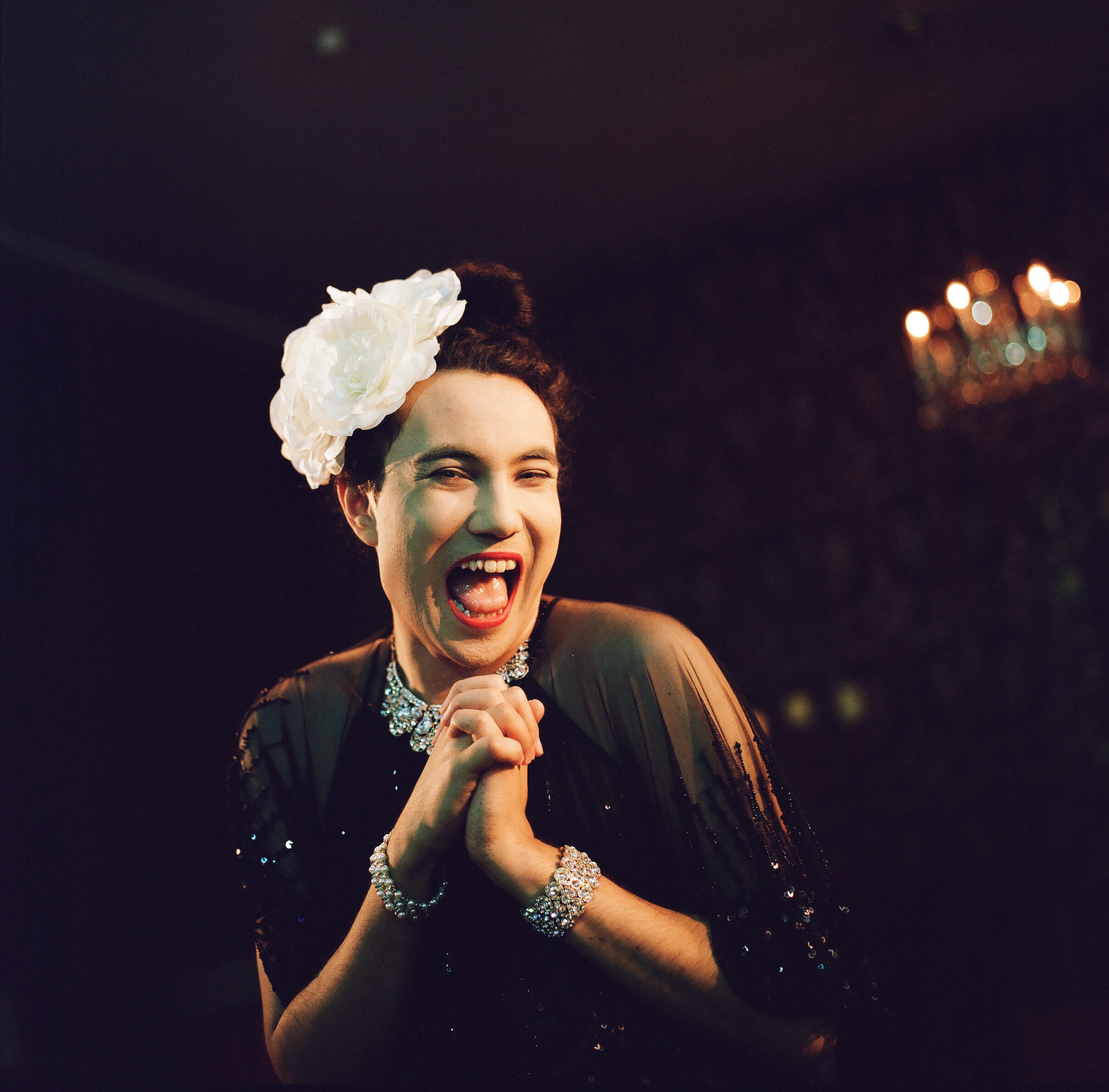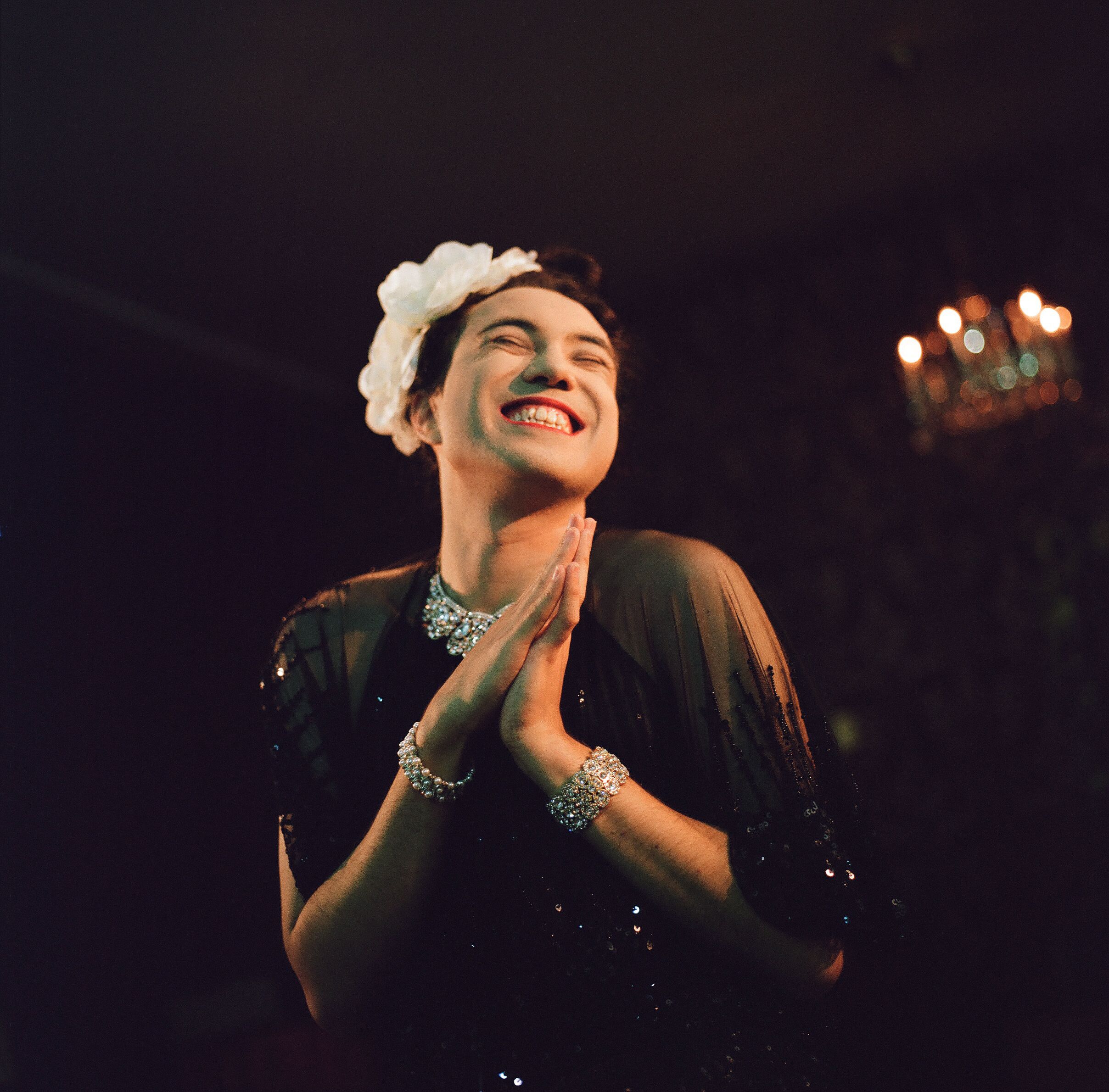Interview #59 — Mama Alto
Mama Alto is a jazz singer, cabaret artiste, gender-transcendent diva and community activist.
She is a trans femme person of colour who works with the radical potential of storytelling, strength in softness and power in vulnerability.
Mama speaks to Adolfo Aranjuez about Othering, activism through art and the transformative impact of song.
In your own words, how would you describe the art that you create?
It is about the storytelling, emotional and empathy-rich powers of music to allow us all to access, explore and express our emotions at a depth and intensity that is normally taboo in our society. Song connects us to our humanity.
How did you get started singing jazz and cabaret?
My father has an immense love of music, and his mother sang in church in Java. Whether by nature or nurture, I inherited that. My mother says, as a newborn in the hospital, I made little noises—‘like birdsong’—in the crib.
Jazz, as a genre, attracted me because of its boundless creativity, its freedom, its expressiveness, its innovation, and because it so often centres the power and beauty of women of colour. Cabaret attracted me because it is a space of diversity, of queerness, of idiosyncrasies, of embracing authenticity and vulnerability and uniqueness, of challenging authority and bigotry. At their best, jazz and cabaret offer alternative visions of what the world can and should be.
—
"Jazz, as a genre, attracted me because of its boundless creativity, its freedom, its expressiveness, its innovation, and because it so often centres the power and beauty of women of colour."
—
You’ve collaborated with an array of impressive organisations and individuals across the world, from Taylor Mac and Phillip Adams, to the Havana International Theatre Festival. Could you regale us with some standout moments from your career to date?
Every moment of being on stage—singing to people, communicating directly from my heart to theirs—is an honour and joy, and a standout moment. Among my proudest moments are: performing with Finucane & Smith in the 1958-built Copa Room cabaret of the Havana Riviera; singing two shows to a sold-out house in the Salon of the Melbourne Recital Centre to commemorate the 100th birthday of Billie Holiday; an impromptu on-stage moment with the legendary Mary Wilson during the opening night of the American Songbook Festival; performing with Taylor Mac and a fabulous orchestra, including a solo song, during the Melbourne Festival for nearly a thousand people; and singing at one of the first legal same-sex weddings in Australia on the first day of legal recognition.
Your art is very strongly tied to your activism, particularly when it comes to POC, queer and trans issues. What motivates this?
The personal is political, especially for people from marginalised and minoritised groups, and to me, art is personal—so, then, art is political. I am motivated by empathy, by rage, by injustice, by humanity, by the world around me, and by the inequality as well as the beauty and power I see in that world. The arts reach people emotionally. So, through the arts, we can empower the marginalised, affirm lived experiences, and challenge preconceptions and prejudices.
"The personal is political, especially for people from marginalised and minoritised groups, and to me, art is personal—so, then, art is political."
How do you, as a multiple-minority artist, manage to straddle grassroots/community events and more highbrow/institutional ones?
Precariously, with difficulty and deep thought. I do it to spread art, to spread messages and, of course, to destroy the white-cis-hetero-patriarchy of power imbalances and systemic oppressions.
Beyond politics, you’re also engaged with the theory underpinning your work—you’ve contributed to LGBTQIA+ and arts publications, and spoken on a variety of panels. In fact, we met during the inaugural Midsumma Futures mentorship program, for which you presented a workshop and I was a participant! How do aspects of gender studies, queer theory and/or musicology inform your work?
I adore knowledge and voraciously seek it out. I thirst for it. My artistic practice and my activism respond to that, incorporating what I have learned, reflecting and elaborating upon it, connecting it to other concepts and thoughts, and sometimes interrogating, deconstructing or exploring alternative perspectives to what I may have been taught. Knowledge, theory and critical thought—alongside storytelling, of course—have such potential to expand the way we know our world and ourselves.
—
"But we should also all keep in mind that intellectual theory and discourse are very inaccessible to many people, for many reasons, and are too often weaponised against them."
—
Do you have any particular thinkers you’d recommend as starting points for anyone interested in POC, queer and/or trans theory or activism?
Excellent starting points that are more accessible might be websites such as The Body Is Not an Apology or the online presence of Archer magazine. I highly recommend a new book, Trans Like Me by CN Lester. Delving deeper, writings by Audre Lorde, Kimberlé Crenshaw, Frantz Fanon and James Baldwin are all excellent. Public libraries are a fantastic resource and can order books into their collections on request, too!
But we should also all keep in mind that intellectual theory and discourse are very inaccessible to many people, for many reasons, and are too often weaponised against them.
You’re launching your anthology record on Friday 22 June, and you have your Torch Songs performances in Melbourne and Hobart in early July. What can audiences expect from these?
Song and storytelling that emphasise the centring of emotion, of heart, of depths and intensities. And hopefully a fabulous evening.
What does the future hold for this gender-transcendent diva?
More singing, I hope. More art. I always feel I can do, and be, more.
Do you have any advice for emerging singers?
It is of great comfort and great inspiration to remember: everybody can sing and nobody can sing; those two things are both contradictory yet simultaneously true. Singing is a natural extension of breathing, a spiritual extension of the soul, and a figurative extension of storytelling and imagery.
Who are you inspired by?
I am inspired by those who fully inhabit their idiosyncrasies. I am inspired by authenticity. I am inspired by magnificent femmes, by trans people embracing their true selves, by people of colour living and loving fiercely, by strong women.
What are you currently listening to?
I am hoping to listen to the universe, and to my heart. I’m not having much luck with the former, but I will keep trying.
What are you currently reading?
I am trying to slowly and carefully absorb my way through Audre Lorde’s essay ‘Poetry Is Not a Luxury’.
How do you practise self-care?
Self-care is often glamorised and commodified at the moment. What is it actually? At its most basic, I must remember and conserve enough energy to: breathe, shower, eat and sleep. At a more luxurious level, to (re)connect with self and with others. Then, drink tea. And repeat.
—
"To be Asian-Australian is a challenging identity space, with the construction of Australian identity so often falsely predicated on ideals of whiteness. In a climate of (yet again) increasing white ethno-nationalism, it is alarming to be made to feel like a foreign Other, an invading ‘yellow peril’, in the country you were born in."
—
What does being Asian-Australian mean to you?
This question, to me, is so difficult. As a mixed-race, part-white, part-Asian, brown person who grew up in Australia with little tangible connection to a Javanese ancestral homeland, sometimes it is hard to feel Asian or Australian. I am going to answer as best I can, with a few different vignettes.
To be Asian-Australian is a challenging identity space, with the construction of Australian identity so often falsely predicated on ideals of whiteness. In a climate of (yet again) increasing white ethno-nationalism, it is alarming to be made to feel like a foreign Other, an invading ‘yellow peril’, in the country you were born in. You are often reduced to a stereotype, and sometimes subjected to violence because of that. It is a challenging space, in that it is a challenging identity to inhabit, but also in that your identity challenges dominant ideas of what it means to be Australian.
Once, I was walking through the city with a white friend, at night, having seen a show. I was wearing some Javanese batik, proudly, pleased with this tactile fabric connection to ancestry. Then, a car of drunk white men sped past, slowing down as it neared us. They glared out of the open windows, staring at me with malice and disgust. The car doubled back, making a U-turn to come back to where we were walking. Revving the engine, one of the men threw his fist up into the air: ‘Terrorist!’ he screamed, as the driver honked the horn and sped into the night.
I can vividly remember in primary school and high school, the white girls more popular than me told me my lunch—satay with peanut sauce, or curry with rice—looked ‘like poo’. It was a much deeper statement about the disgustingness of being a racial Other. I remember seeing those same girls come home from family holidays to Bali with braided hair and being complimented on looking ‘so exotic’, and now, I see them on Instagram gaining thousands of likes for their artsy photographs of South-East Asian food. I log on to Facebook and see targeted ads for skin bleaching—to be ‘Fair and Lovely’. To me, those memories and experiences say something about value, fetishisation, disrespect and orientalism.
My white great uncle used to tell me he supported Pauline Hanson because she would ‘keep the yellow hordes out’. Noticing the alarm on my face, he would tell me: ‘Oh, but not like you, you’re not like them. Not really.’ Similarly, I recall white friends and lovers telling me they didn’t understand or appreciate Asians as friends or lovers—‘But not you! You’re not really Asian. You’re not Asian to me.’
Being Asian-Australian involves being hyper-aware of the violently white-supremacist policies and attitudes in this country. It involves being a target of those with white privilege, while also being a direct recipient of invader privilege: benefiting from the unequal power balance between Indigenous and non-Indigenous Australians. It involves a kinship and empathy with those seeking asylum, and a bitter understanding of the government’s xenophobia, which leads to the inhumane treatment of and far too many fatalities for asylum seekers detained at Australia’s edges.
Yet being Asian-Australian also means being part of a rich tapestry of heritages and cultures that are interconnected and trace your lineage back across time and place. It is surely not all negative, then. But it is a constant negotiation of shifting spaces. And it’s a liminality.
Find out more
@MamaAlto
@mama.alto
www.mamaalto.com
Interview by Adolfo Aranjuez
Photography by Leah Jing McIntosh








